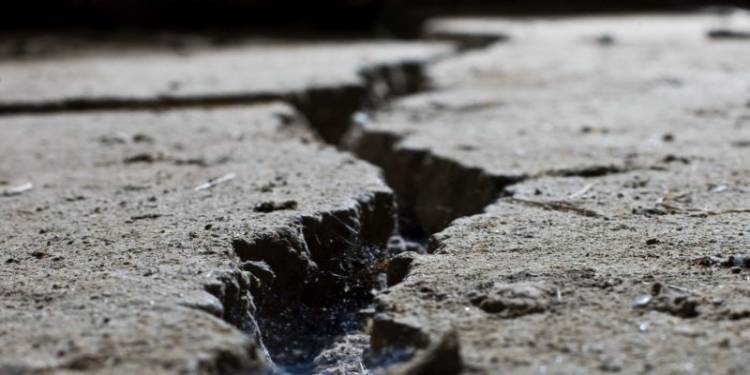
According to the National Seismic Monitoring Centre (NSMC), a powerful earthquake with a magnitude of 6.0 rattled areas of Pakistan on Sunday.
No loss of life was reported till the filing of this report. The earthquakes caused alarm among residents of high-rise buildings and residences in Rawalpindi, Islamabad, Attock, and portions of Khyber Pakhtunkhwa and Kashmir.
Lahore, Jhelum, and Chakwal in Punjab were also affected by the earthquake tremors.
The US Geological Survey estimates that the earthquake's magnitude was 5.2. However, NSMC affirmed that it was 6.0.
According to details, the earthquake took place at 10:50 a.m., and its epicenter was near the border between Afghanistan and Tajikistan.
Since the earthquake was 223 km deep, it was felt in several countries, including Pakistan, China, Afghanistan, and India.
It should be mentioned that following the earthquake, there were no immediate reports of injuries or damage.
Due to Pakistan's location near the meeting point of the Indian and Eurasian tectonic plates, earthquakes are a regular occurrence there.
A tectonic plate known as the Indian Plate is pressing against the Eurasian Plate from the north, which is causing seismic activity across significant portions of South Asia.
On March 22, 2023, at least nine people died in Khyber Pakhtunkhwa and more than 40 sustained injuries as a 6.5-magnitude quake jolted several cities of the country.
Besides the federal capital, tremors were felt in Peshawar, Skardu, Lahore, Charsadda, Multan, Rawalpindi, and other parts of Pakistan.
According to the Pakistan Meteorological Department, the quake had a 180-kilometer depth with its epicenter in the Hindu Kush region.
The International Seismological Centre said tremors were also felt in Turkmenistan, India, Kazakhstan, Tajikistan, Uzbekistan, China, Afghanistan, and Kyrgyzstan.
Also, US Geological Survey said the quake rocked Afghanistan and parts of India too and marked its epicenter at 40 kilometers south-southeast of the Afghan town of Jurm.
No loss of life was reported till the filing of this report. The earthquakes caused alarm among residents of high-rise buildings and residences in Rawalpindi, Islamabad, Attock, and portions of Khyber Pakhtunkhwa and Kashmir.
Lahore, Jhelum, and Chakwal in Punjab were also affected by the earthquake tremors.
The US Geological Survey estimates that the earthquake's magnitude was 5.2. However, NSMC affirmed that it was 6.0.
According to details, the earthquake took place at 10:50 a.m., and its epicenter was near the border between Afghanistan and Tajikistan.
Since the earthquake was 223 km deep, it was felt in several countries, including Pakistan, China, Afghanistan, and India.
It should be mentioned that following the earthquake, there were no immediate reports of injuries or damage.
Due to Pakistan's location near the meeting point of the Indian and Eurasian tectonic plates, earthquakes are a regular occurrence there.
A tectonic plate known as the Indian Plate is pressing against the Eurasian Plate from the north, which is causing seismic activity across significant portions of South Asia.
On March 22, 2023, at least nine people died in Khyber Pakhtunkhwa and more than 40 sustained injuries as a 6.5-magnitude quake jolted several cities of the country.
Besides the federal capital, tremors were felt in Peshawar, Skardu, Lahore, Charsadda, Multan, Rawalpindi, and other parts of Pakistan.
According to the Pakistan Meteorological Department, the quake had a 180-kilometer depth with its epicenter in the Hindu Kush region.
The International Seismological Centre said tremors were also felt in Turkmenistan, India, Kazakhstan, Tajikistan, Uzbekistan, China, Afghanistan, and Kyrgyzstan.
Also, US Geological Survey said the quake rocked Afghanistan and parts of India too and marked its epicenter at 40 kilometers south-southeast of the Afghan town of Jurm.

